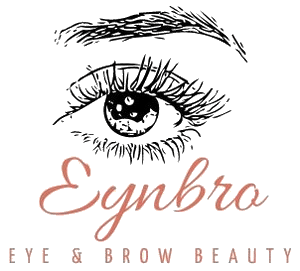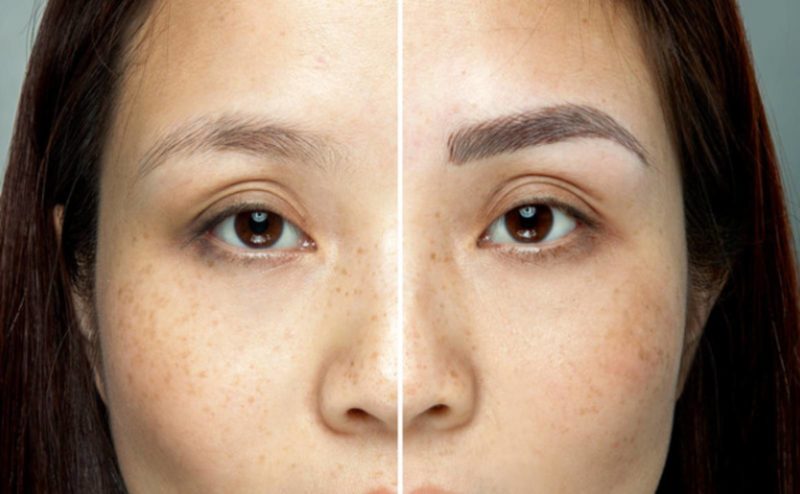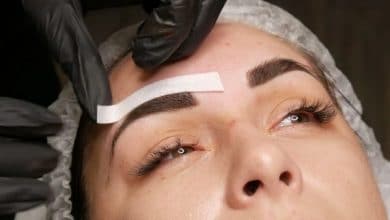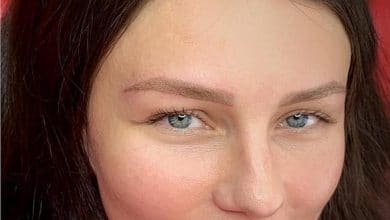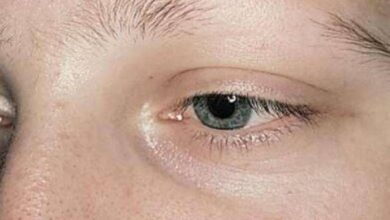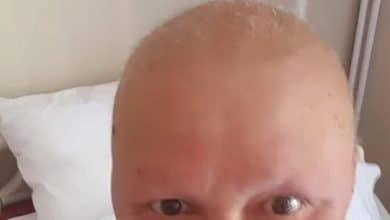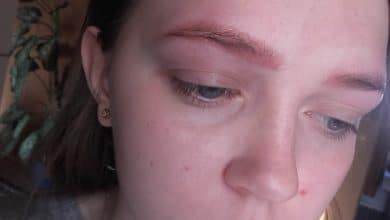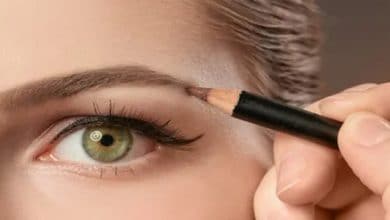How to treat allergic reaction to eyebrow tint?
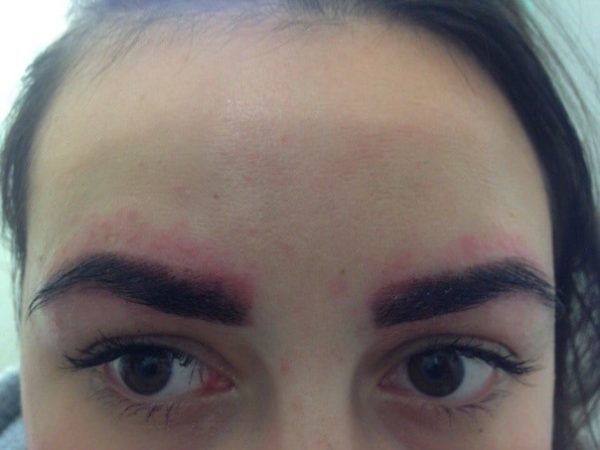
Eyebrow tinting is a popular beauty treatment designed to enhance the appearance of your brows. But for some individuals, it can trigger an unexpected and uncomfortable reaction. If you’ve experienced redness, swelling, itching, or worse after a brow tint, you’re not alone—and you’re right to take it seriously. Allergic reactions to eyebrow tint can range from mild to life-threatening. This article explores the causes, symptoms, treatment options, and safe alternatives for eyebrow tint allergies, based on expert dermatological insights and real-world cases.
Understanding PPD and Other Common Allergens in Eyebrow Tint
Most allergic reactions to eyebrow tint are caused by a chemical called Paraphenylenediamine (PPD). It’s a powerful coloring agent found in most permanent and semi-permanent dyes—especially those in black or dark brown shades. PPD needs to oxidize (usually with a developer like hydrogen peroxide) to produce color, and it’s in its partially oxidized state that it becomes highly allergenic.
Other common allergens in eyebrow tinting products include:
- Ammonia
- Resorcinol
- Peroxide
These ingredients can irritate sensitive skin or trigger allergic contact dermatitis, even if you’ve used the same product in the past without issue.
What can I use for an allergic reaction on my eyebrows?
A doctor may prescribe a topical treatment for itchy eyebrows. Treatment will depend on the cause of the allergic reaction to eyebrow tint : People can treat mild seborrheic dermatitis with an antifungal cream or a medicated shampoo. More severe cases may require corticosteroid medication or antifungal pills.

- If you have an initial, mild response to the dye, rinse it off with warm water and a light soap or shampoo right away.
- To treat the damaged area, use a potassium permanganate solution. This may aid in the complete oxidation of PPD. When PPD is partially oxidized, it merely produces allergic reactions.
- Use an over-the-counter topical corticosteroid cream to relieve symptoms of contact dermatitis, such as redness or itching. These creams are safe to use on the face, neck, and other regions of the body, but not on the eyes or mouth.
- Apply shampoos containing topical corticosteroids to your scalp, such as Clobex.
- Apply hydrogen peroxide to the area. This is a gentle antiseptic that can relieve inflammation and blisters while also calming the skin.
- To help minimize skin irritation and itching, take an antihistamine such Benadryl.
Real-Life Examples of Reactions
It’s not rare for reactions to appear suddenly—even in individuals with no prior sensitivities.
One case involved a 24-year-old woman who developed red, itchy bumps on her brows within hours of tinting. She tried hydrocortisone cream but saw no improvement. The area crusted over, becoming more inflamed and painful by the next day. After consulting a dermatologist online, she was advised to use cold compresses, apply aloe vera, and take oral antihistamines while avoiding any further chemical products on her skin.
In another case, a 35-year-old on holiday in Lisbon experienced sudden facial swelling the day after tinting her brows. Without access to her usual doctor, she was advised to use over-the-counter antihistamines like cetirizine and apply hydrocortisone cream while monitoring for signs of anaphylaxis.
How long does allergic reaction to eyebrow tint last ?
They may take a few hours to a few days to disappear. If the exposure to the allergen continues, such as during a spring pollen season, allergic reactions may last for longer periods such as a few weeks to months. Even with adequate treatment, some allergic reactions may take two to four weeks to go away.
Use shampoos containing topical corticosteroids, such as Clobex, on your scalp. Apply hydrogen peroxide. It’s a mild antiseptic and may help calm the skin and reduce irritation and blistering. Take an oral antihistamine, such as Benadryl, to help reduce skin inflammation and itching.
Signs and Symptoms to Watch For
Allergic reactions may begin within minutes or take up to 48 hours to show. Symptoms include:
| Severity | Symptoms |
|---|---|
| Mild | Itching, redness, dryness, slight stinging |
| Moderate | Swelling around the eyes, raised rash, burning, bumps |
| Severe | Blisters, oozing skin, eye closure, widespread hives |
| Critical | Anaphylaxis: throat swelling, difficulty breathing, fainting |
If symptoms escalate, especially with facial or throat swelling, seek emergency care immediately. Anaphylactic reactions can be life-threatening and require urgent medical attention.
Step-by-Step Treatment for Allergic Reaction to Eyebrow Tint
If you believe you’re having a reaction to eyebrow tint, follow these steps:
1. Remove the product immediately
Gently wash your brows and surrounding area with lukewarm water and a mild soap or gentle shampoo. Avoid harsh scrubbing.
2. Apply a cold compress
Soothes inflammation and reduces swelling. Use for 10 minutes at a time.
3. Use emollients
Apply petroleum jelly or a fragrance-free moisturizer to help restore the skin barrier.
4. Topical corticosteroids
Apply a mild steroid cream (e.g., 1% hydrocortisone) to reduce redness and itching. Avoid direct contact with eyes.
5. Oral antihistamines
Use Benadryl (diphenhydramine), Claritin (loratadine), or Zyrtec (cetirizine) to combat systemic allergic symptoms.
6. Hydrogen peroxide (3%)
Dab gently to help fully oxidize any remaining PPD. This may reduce further irritation.
7. Monitor for escalation
If swelling spreads or you experience difficulty breathing, call emergency services immediately.
What to Avoid During a Reaction
- Don’t apply makeup or additional products to the area
- Avoid Neosporin unless recommended by a doctor—it’s an antibiotic, not an anti-inflammatory
- Don’t scratch or pick at the area, which may lead to infection
- Skip the temptation to re-dye or “fix” the tint at home
Common Mistakes That Make Reactions Worse
- Skipping the patch test: Always test 48 hours before application, even if using a familiar brand
- Using expired or cheap tint products: Ingredients can degrade or contain unregulated chemicals
- Choosing the darkest shade: These contain higher PPD concentrations and increase risk
- Ignoring early warning signs: Redness, tingling or itching before full development is a red flag
What are people allergic to in tint?
Many permanent and some semi-permanent hair dyes contain a chemical called paraphenylenediamine (PPD), which is a known irritant and allergen. This is the culprit of most reactions to hair dye.Dyeing hair seems to come naturally to many people as they age, but it could be the cause of an allergic reaction, no matter how long you’ve been using the same product, according to a dermatologist at Baylor College of Medicine.
Even if you’ve used a product or substance previously, you can develop an allergy to it at any time. That’s why, even if it’s a well-known brand, a patch test is required before using hair dye.
If you experience an adverse reaction to hair color, even if it is light, you should stop using it immediately. As your system grows sensitized to the drug, you may experience a more severe reaction with continued use.
You may be exposed to higher levels of PPD if you use black temporary tattoos. This can also sensitize your system, making you more susceptible to hair dye allergies.
People who are allergic to PPD are likely to be allergic to other chemicals as well. Anesthetics like benzocaine and procaine are among them. Any allergies you have or suspect you have should be disclosed to your doctor, dentist, and anybody who works on your hair.
How to Do a Proper Patch Test
A patch test is your best defense against a bad reaction:
- Mix a small amount of tint with developer
- Apply a tiny dot behind the ear or on the inner elbow
- Leave for 10 minutes, then rinse
- Observe for 48 hours—look for redness, swelling, or itching
Use the darkest shade you intend to apply, as it will contain the most PPD.
Best Alternatives to PPD-Based Eyebrow Tints
If you’ve had even a mild reaction, it’s best to avoid PPD permanently. Fortunately, there are safer options available:
| Brand | Product Type | PPD-Free | Notes |
|---|---|---|---|
| Apraise | Brow and Lash Tint | Yes | Gentle formula designed for salons |
| Supercilium | SNAP Gel Tint | Yes | Specifically marketed as PPD-free |
| Henna (pure) | Natural Dye | Yes | Avoid “black henna” which may contain PPD |
| Indigo/Vegetable | Semi-permanent | Yes | Less vibrant but gentler on the skin |
Note: Even PPD-free options should be patch-tested, as other ingredients like resorcinol or ammonia can also cause reactions.
What causes your forehead to itch?
An itchy forehead can be caused by hair products, insect bites, heat, or a host of other irritants. Typically, if you’re experiencing an itchy forehead, you can treat it at home with natural or over-the-counter items.

Itching of the hair is associated with dandruff, seborrhea, pediculosis, some types of herpes, hypovitaminosis, allergic reactions, somatic and endocrine diseases, accompanied by dry skin and metabolic disorders. Physiological reasons include non-compliance with the rules of coloring and hair care, too tight hair.
The Importance of Consent Forms and Salon Safety
For professionals offering brow tinting, informed consent is crucial. Always have your clients sign a consent form before treatment, outlining the products used and potential risks. This not only ensures client safety but also offers legal protection to your business. Free downloadable consent forms are available from brands like Supercilium.
Patch testing should be redone:
- Every 6 months
- After pregnancy (hormonal changes can trigger new allergies)
- If switching to a new product, even if it’s labeled hypoallergenic

What happens if your allergic to eyebrow tint?
Occasionally, a hair dye allergy will cause anaphylaxis to occur. This rare reaction is a medical emergency and can be fatal. Symptoms of anaphylaxis may include: skin reactions such as stinging, burning, swelling, and rashes.
If someone develops an allergy to a specific eyebrow coloring product, it’s possible that the reaction was sparked by a chemical in the product rather than the product itself. Chemical levels vary per product, so if a material poses a health danger, it’s advisable to hunt for a better option that doesn’t include it. Some eyebrow coloring products may cause allergic responses in addition to allergic reactions to ordinary dye. It’s also possible that a person is merely chemically sensitive. Contact dermatitis symptoms, such as red, dry skin, may be present in a sensitivity.
In a brief, the difference between an allergy and a sensitivity is that an allergy is an intolerance to chemical products, whereas a sensitivity is a reaction triggered by the skin. In comparison to the first, she does not endanger her life. When it comes to allergies, the immune system is the one that kicks in.
What hair dye can I use if I’m allergic?
“For people who are truly allergic to PPD, what we recommend that they do is use black-walnut hair dye, which is a stain,” Draelos says. “Of course, you can only go darker.” For those who’d rather be redheads, henna products are another possibility (unless you’re allergic to henna).

Takeaway
Allergic reactions to eyebrow tints are more common than many people think. While they can be mild, they also have the potential to escalate into serious conditions like anaphylaxis. The key is prevention—always patch test, use safe and regulated products, and stay informed about ingredients like PPD. If a reaction does occur, act quickly, treat symptoms properly, and consult a medical professional if needed.
Beauty should never come at the cost of your health. With proper precautions, you can enjoy defined, beautiful brows—without the risk.
FAQs
Can I develop a tint allergy even if I’ve used the same product before?
Yes. Sensitivities can develop over time, especially with repeated exposure to PPD.
What should I do if I had a mild reaction once—can I try again?
No. Even mild reactions suggest sensitization. Repeating exposure may lead to severe or even life-threatening reactions.
Are there truly hypoallergenic eyebrow tints?
Some products are PPD-free and labeled as hypoallergenic, but reactions can still occur. Always read the full ingredients and patch test.
How long do symptoms from a reaction last?
Mild reactions may last 2–5 days. Severe reactions can linger for weeks and may require medical care.
Can I go to a salon again after a reaction?
Only if the salon offers PPD-free options and performs a proper patch test. Inform your technician of your allergy history.
Should I avoid all hair dyes if I’m allergic to PPD?
Yes, especially black or dark brown dyes. You may also be sensitive to related chemicals found in tattoo ink, printer ink, and some anesthetics.
Conclusion
Someone like you does not want to be allergic to eyebrow tint. We’re discussing two of our face’s most vital features: brows and skin. Any harm to them might be devastating! Eyebrow tinting treatments that are widely available on the market frequently contain greater levels of chemicals that may cause harm to the user. It is critical to get a product from a reliable vendor who is aware of any health dangers.
If you’ve had a reaction before, speak to a dermatologist and consider seeing an allergy specialist to determine what you can safely use moving forward.
